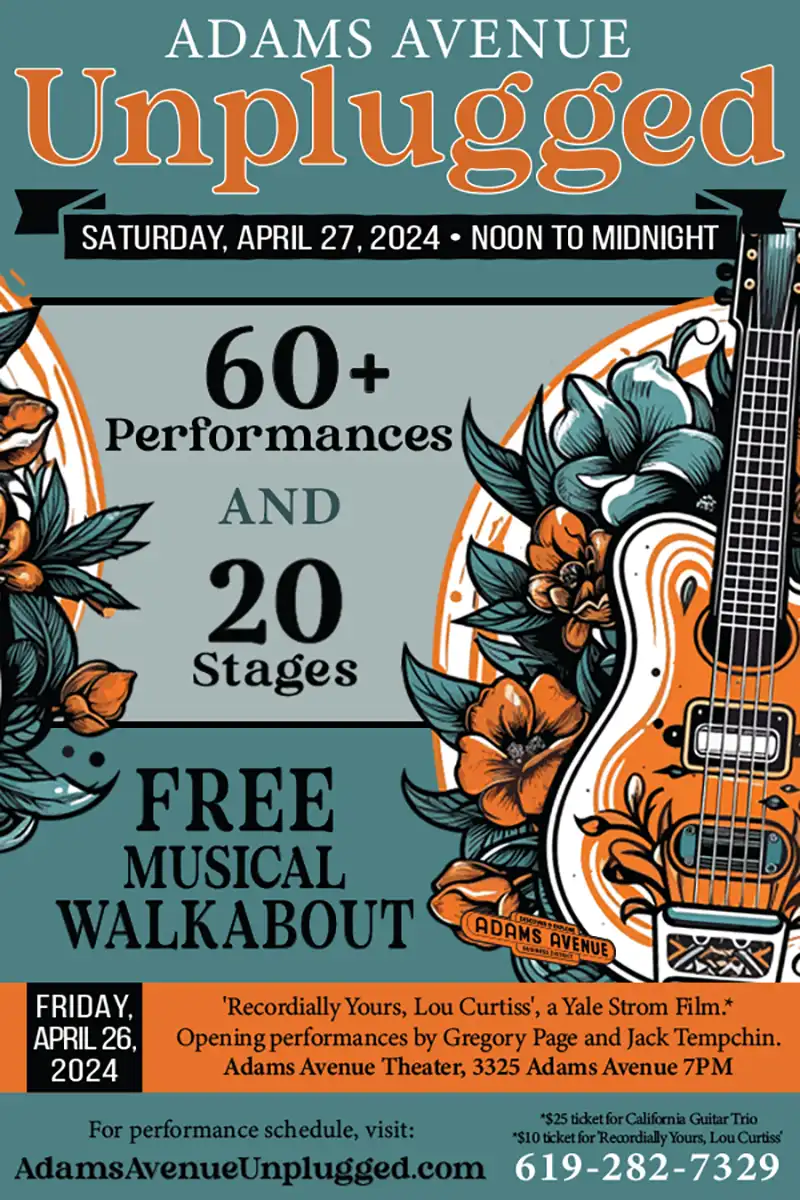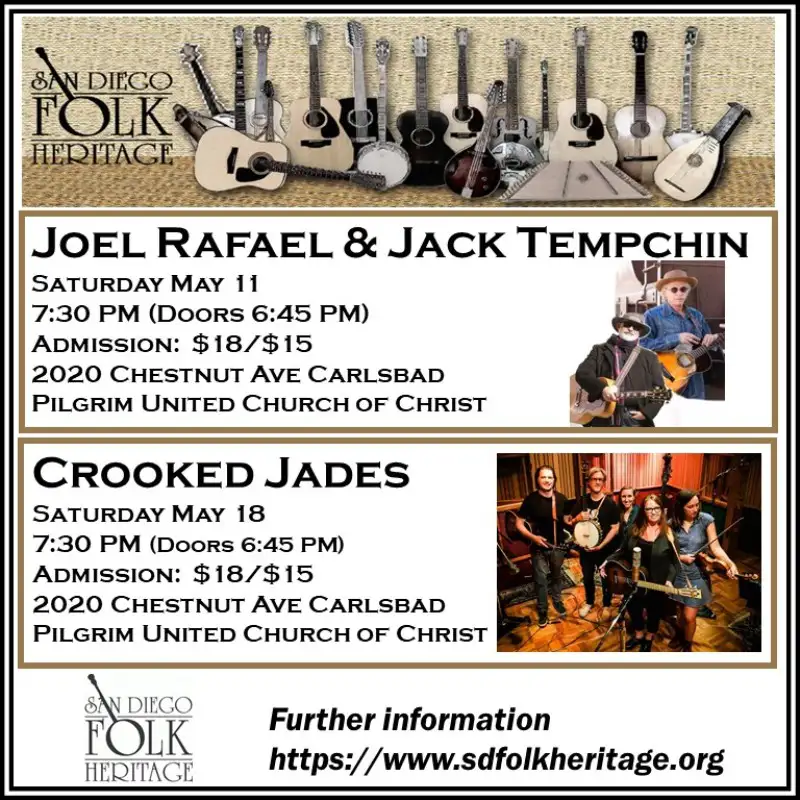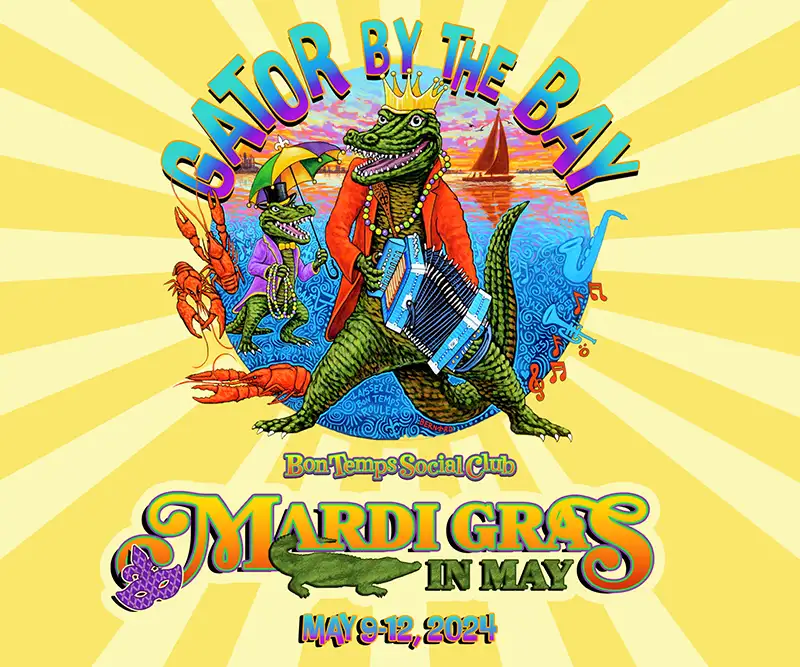Yesterday And Today
Queen of Hillbilly Swing: ROSE MADDOX, part 3
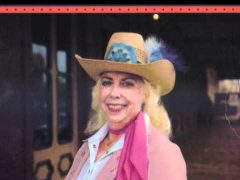
Rose Maddox in the 1980s
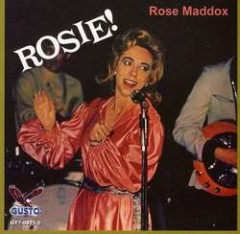
Cover of Rose’s 1967 Starday album
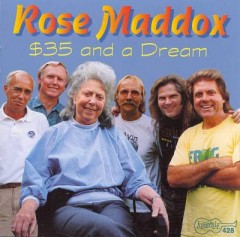
1994 album with Rose Maddox backed by the Desert Rose Band
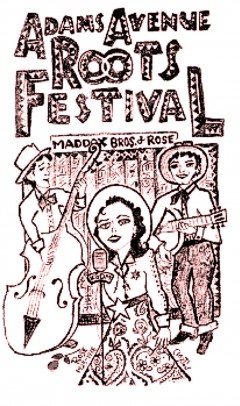
1999 poster for the Adams Avenue Roots Festival, honoring Rose Maddox, the year after she died. Art by Roy Ruiz Clayton.
By the early ’70s the complexion of life had rapidly changed for Rose. Brother Cal had died from a heart attack and her mother Lula soon followed. She was divorced from Jimmy Brogdon. Now in her mid-40s, Rose had to modernize her image to look more female country vogue. It became necessary to reinvent herself since popular tastes in country music had changed. The image of the hillbilly swing queen was long gone. Out went the flashy Annie Oakley cowgirl outfits, replaced by mini-skirts and slinky gowns. Rose even changed her short, dark tresses to a highly coiffed platinum blonde. Outward changes came, but her inward soul and grit still remained.
By this time country music was increasingly controlled by marketing agents, lawyers, and corporation execs, most of whom had little interest in country music as a form of American expression. The days when artists dealt directly with colorful cigar-chomping talent brokers and regional scene bosses were over. Though no longer a headliner, Rose continued to get plenty of work in small lounges and honkytonks up and down the West Coast. From this point on Rose would continue to record, but only for a succession of small independent labels like Starday, Cathay, Takoma, and Arhoolie.
Though the opportunity for renewed stardom had eluded her, Rose still put her all into every performance. She had a legacy that reached back decades and legions of fans still showed up when she performed, and these folks she couldn’t disappoint. Increasingly, she also became more active on the folk festival circuit as an Americana pioneer. The San Diego Troubadour’s own Lou Curtiss was the first to introduce Rose to the folk festival format in 1976. From that date until 1996, she would perform at many of Lou’s legendary folk festivals, first at SDSU and later on Adams Avenue. About the same time, Chris Strachwitz of Arhoolie Records, who was interested in reissuing all the old Maddox Brothers and Rose recordings, approached her. Rose became an invaluable source in identifying and compiling these now antique and timeless recordings.
As the late ’70s and early ’80s approached, Rose spent more and more time at her home in Ashland, Oregon than on the road. Her son Donnie had quit touring with her several years earlier when he had taken a bride and started raising a family, but he was back to his chores behind the wheel and behind the bass when Rose again received some unexpected recognition. First, the movie Urban Cowboy sparked renewed interest in country music and the cowboy lifestyle. It is noteworthy to mention that this trend took hold in gay communities up and down the West Coast. Soon Rose and Donnie found steady, well-paying work in gay bars sporting new country-western décor. She also hit a nerve in the neo-rockabilly sect of the fresh punk rock movement. These rough-edged youths were trying to rediscover their roots-rock past, and they soon found that few were as rootsy as Rose. Rose’s career was in the midst of a revival, though well out of the mainstream, as it took on underground cult status. Rose’s born again vitality resulted in more compilations being reissued by Bear Family and even Columbia.
During this renaissance a series of disasters struck. Though not yet 40, Donnie suffered a heart attack, which required open-heart surgery; additional by-pass operations would follow. Then in December, 1981, Rose suffered two heart attacks, the second of which almost killed her. Somehow she managed to recover by the spring of ’82, but with Donnie’s health still in doubt, she began touring with the Vern Williams Band, a bluegrass outfit from northern California. In late July, while at home just prior to leaving for a rodeo gig in Reno, Rose got a call from Donnie’s wife telling her that he had suffered a massive stroke. Rose was at her son’s hospital bedside when he passed away on August 1.
Rose was devastated by the loss of her son, but rather than packing it in, she dealt with the pain by putting forth an incredible spurt of energy. With the Vern Williams Band backing her up, Rose recorded A Beautiful Bouquet, an album of gospel songs. She then recorded the album Queen of the West with none other than Roy Nichols, Emmylou Harris, and Merle Haggard and his famous band the Strangers. Both albums were dedicated to Donnie. In the late ’80s I caught a Rose Maddox show at the Belly Up Tavern. So as to perpetuate this bond with her son, Rose had none other than Donnie, her grandson, playing bass in her new group, the Foggy Notion Band.
In 1984 a video documentary by San Francisco folklorist Gail Waldron was released, chronicling the incredible career of the Maddox Brothers and Rose. Rose and brother Fred reunited in support of the video, performing around the Bay Area. They then began doing a host of gigs throughout the San Joaquin Valley. The duo were also guests on shows by Merle Haggard, Willie Nelson, Waylon Jennings, and Loretta Lynn. Fred and Rose were well received and well remembered despite not having performed together in almost 30 years. A European tour was even booked, but Fred had to pull out due to poor health. Rose went, however, and for two weeks was greeted by sell-out crowds of fanatic teenagers. This flurry of activity culminated in 1987 when the two surviving members of the Maddox Brothers and Rose were honored at a fiftieth anniversary tribute by the California Western Swing Society.
In 1988 Rose recorded an LP with all the members of the Desert Rose Band sans Chris Hillman. The album consisted of some new material and some remakes of her Capitol hits. Despite the quality of the finished product, inexplicably no label issued it until 1996 when the LP, titled The Moon Is Rising, was finally released by the tiny Country Town label. In June 1989, while driving to a gig in Bakersfield, Rose suffered a major heart attack. Somehow she managed to drive into town and check herself into a hospital. Rose’s heart condition worsened and she slipped into a coma, remaining unconscious for the next three months. When word leaked out about her condition and the fact that she had no health insurance, the country music community in California and elsewhere began holding benefits on her behalf as a means to defray the medical costs. Doctors gave her only a ten percent chance of survival, but in typical Maddox family style, she defied the odds and eventually recovered, albeit slowly.
Rose was released from the hospital in September1989 with evidence of the physical ravages of the ordeal, but mentally she was ready to storm the stages once again. Understandably, gigs became few and far between, but Rose was not about to retire. Nor was she forgotten by those who revered her and who stood in the shadow of her immeasurable legacy. She was invited to appear in 1990 on a Nashville Now TV show with Emmylou Harris and the Desert Rose Band’s John Jorgenson. She made a follow-up appearance with grandson Donnie. Then in 1991 she and Fred showed up as major figures in a PBS-TV documentary called Bakersfield Country. Also on the show were old friends Buck Owens, Merle Haggard, Red Simpson, and Roy Nichols. She tried her hand in Branson, Missouri, which was a very popular spot for recycled hillbilly stars at the time. Once there, however, she found that the only ones who made any money were the club owners. In a further attempt to make ends meet, she sold off all her Nathan Turk cowboy outfits, along with those of brothers Henry and Cal, to hillbilly hotshot Marty Stuart.
In October 1992, brother Fred succumbed to heart failure. Now Rose was all that remained of the family band. Though she loved Fred, as she did all her family, she had learned long before to reach for the future and not hide in the past. In short, she pushed ahead – that’s all she knew how to do. Again she teamed up with former Desert Rose Band members and fiddler extraordinaire Byron Berline to record her 1994 CD $35 and a Dream. This autobiography, set to music, was nominated for a Grammy in the Best Traditional Bluegrass Album category.
On April 15, 1998, Rose Maddox passed away at the age of 72 in Ashland, Oregon. Though awarded a square in the Country Music Hall of Fame’s Walkway of Stars, she has yet to be enshrined as a Country Music Hall of Fame member and probably never will be. Certainly this honor has eluded her for several reasons, all of which can be traced to her own feisty independence. Her music was pure California country, owing little or nothing to Nashville’s music industry. In fact, Rose could be downright irreverent toward Nashville’s star-making process. She could outsing, outperform, and flat out outlast any Nashville groomed performer, and indeed her incredible career proves it. Her sense of timing, showmanship, and delivery, if not instinctual, were at least self taught. She understood that it’s all about winning the hearts of a loyal audience for the long haul, which did not come through gimmicks or catering to pop trends but by making honest, uncompromised music. She could be bold, brassy, and brazen, qualities that endeared her to roughnecks and rednecks, but that made the Nashville elite ill at ease. In short, Nashville is not about to bestow glory on someone they didn’t create. Ironically, the qualities that endeared Rose Maddox to the masses are the same ones that Nashville can’t abide. Despite all of this, Rose Maddox will remain immortal as an American icon and folk heroine. With those accolades, who needs a hall of fame anyway?
Note: This is the last article Lyle Duplessie wrote for the San Diego Troubadour, which was turned in a week before his untimely death on June 17, 2004.


